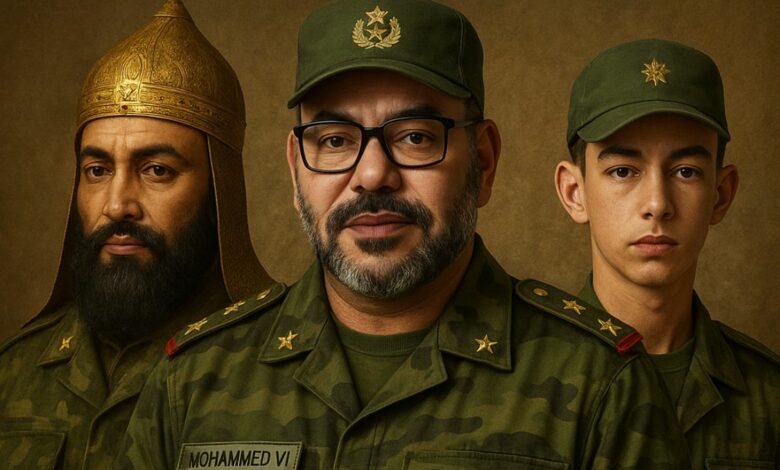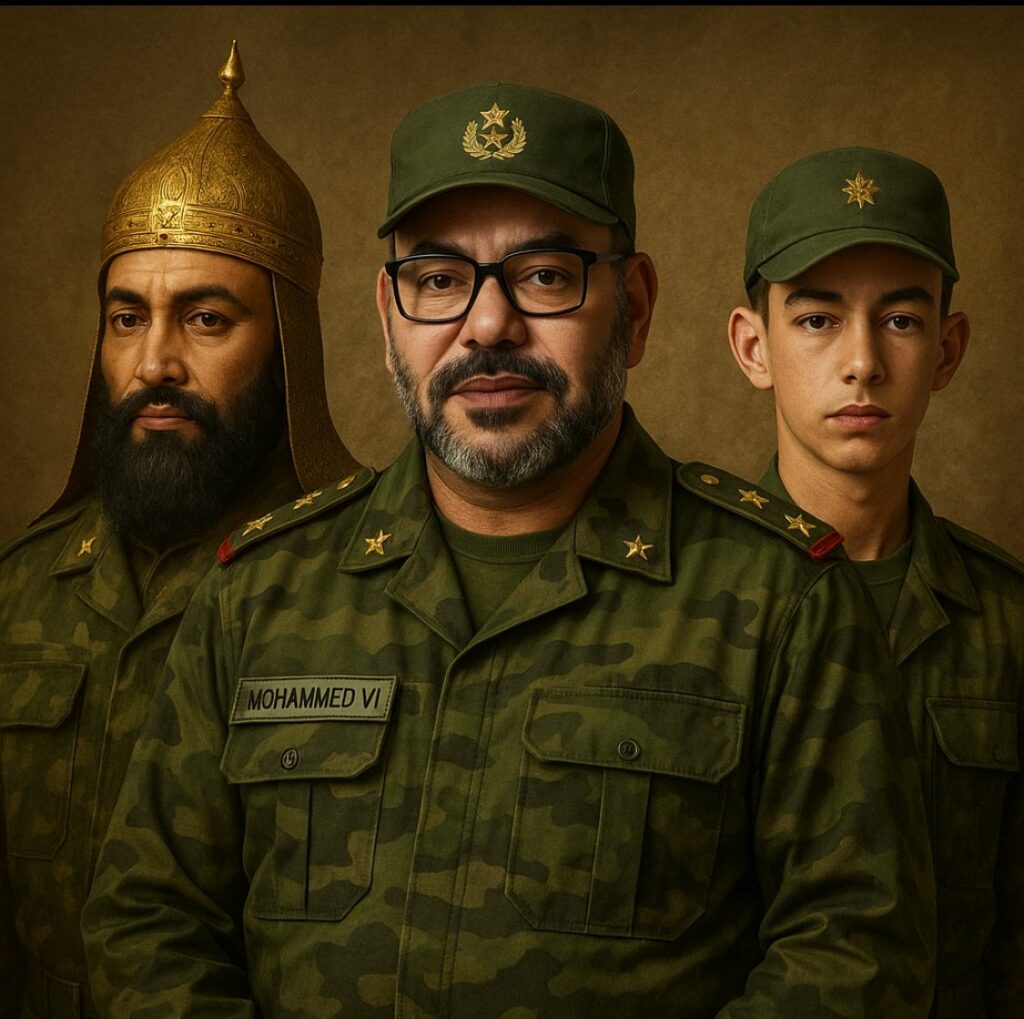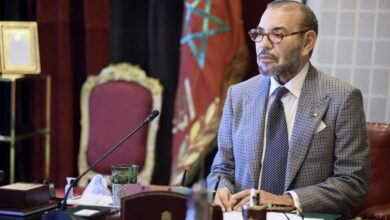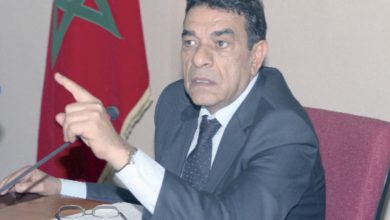From Ahmad al-Mansur al-Dhahabi to Mohammed VI and Moulay El Hassan… The Moroccan Legacy of Glory Continues
From Ahmad al-Mansur al-Dhahabi to Mohammed VI and Moulay El Hassan… The Moroccan Legacy of Glory Continues

Editorial / Meryem Hafiani – ALDAR
In a moment steeped in symbolism and history, King Mohammed VI chose to link Morocco’s illustrious past with its promising future by naming the new class of Royal Armed Forces officers after Sultan Ahmad al-Mansur al-Dhahabi, during a grand military parade marking the 26th anniversary of the Throne Day.
This royal decision reflects a deeply rooted understanding of the Moroccan state — not as a mere accumulation of political events, but as a comprehensive national project that fuses living memory with a long-term sovereign vision.
Al-Mansur al-Dhahabi, who ruled Morocco at the height of its power in the 16th century, was not just any sultan. He was the architect of a golden age during which Morocco reached the peak of its prestige and territorial expansion, from the Atlantic coasts deep into the African Sahara. He won the Battle of Wadi al-Makhazin, imposed Morocco’s respect on the global stage, and ushered in an unprecedented era of prosperity in the military, diplomatic, and scientific fields. In all this, he stood as a symbol of firm leadership and far-sighted vision.
Today, by naming an officers’ class after him, King Mohammed VI is not merely evoking history — he is passing on its meaning. Between the founding sultan and the renewing monarch, with Crown Prince Moulay El Hassan in between, a Moroccan chain of command is forged, where generations inherit the honor of bearing arms and the values of belonging to a nation with an unforgettable past and a future that cannot be postponed.
This naming carries a national message addressed to Morocco’s young military generation: You are the continuation of those who built glory. In Morocco, carrying arms is not just a security task — it is an expression of deep-rooted identity, historical context, and a comprehensive civilizational project. It is a call for these officers to be guardians of the nation, just as al-Mansur was its protector during an era of great challenges.
 The royal decision also carries educational and sovereign dimensions. It is a reminder that the Moroccan army is not merely a formal institution — it is a living memory and a constantly renewed identity. In the vision of the modern Moroccan state, the military is not separate from the national project — it stands at the forefront of its embodiment, from safeguarding territorial integrity to serving the kingdom’s supreme interests.
The royal decision also carries educational and sovereign dimensions. It is a reminder that the Moroccan army is not merely a formal institution — it is a living memory and a constantly renewed identity. In the vision of the modern Moroccan state, the military is not separate from the national project — it stands at the forefront of its embodiment, from safeguarding territorial integrity to serving the kingdom’s supreme interests.
As Crown Prince Moulay El Hassan stood beside his father, King Mohammed VI, during this symbol-laden military ceremony, the future generation emerged, deeply rooted in the values of loyalty and leadership, prepared to carry the torch of continuity. It was a moment that encapsulated the essence of Morocco: a nation grounded in its history, strong through its leadership, and determined to protect its heritage and build its future with a disciplined, conscious army anchored in its noble roots.
Through this intelligent linkage of Al-Mansur al-Dhahabi, Mohammed VI, and Moulay El Hassan, Morocco once again affirms that its national project knows no rupture — it is built upon a cumulative wisdom and a continual renewal of the covenant between throne and people, in defense of land, identity, and sovereignty.





